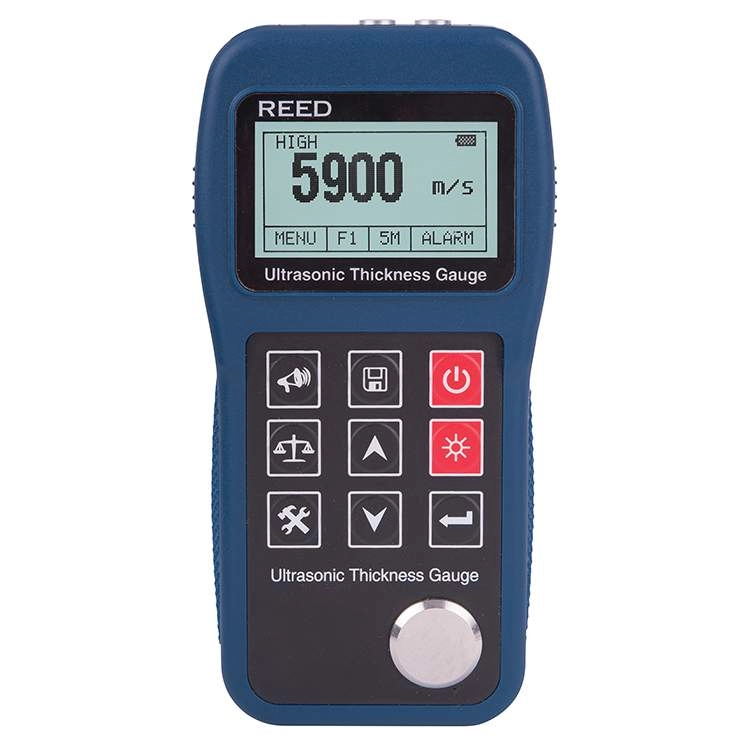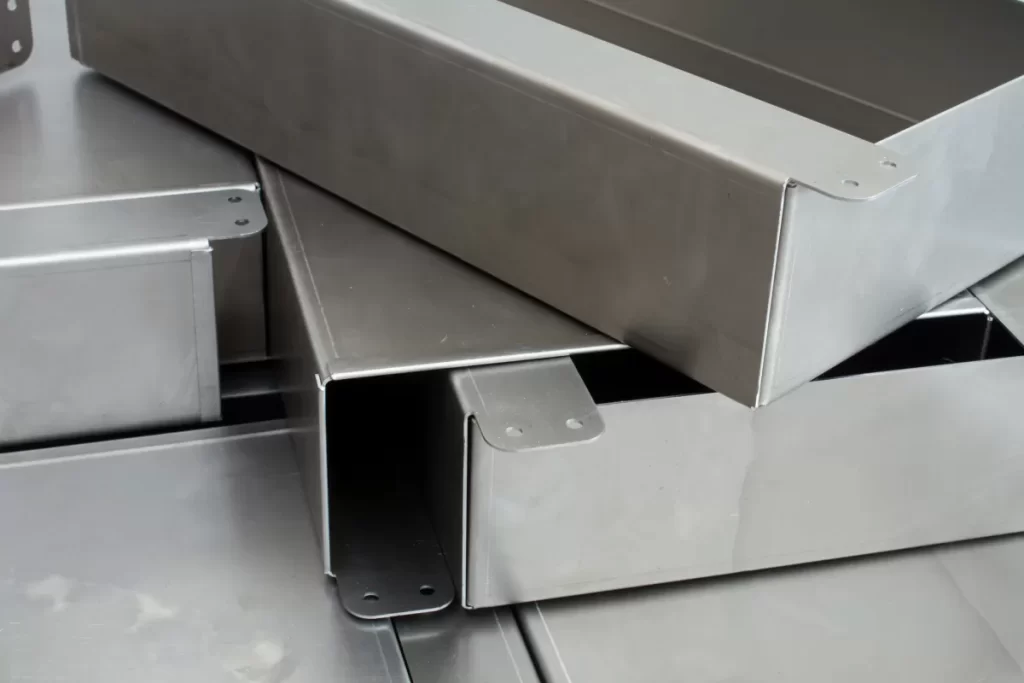What Is Gauge Thickness
Gauge thickness is a standardized system used to measure the thickness of materials, especially metals like steel, aluminum, and wire. Instead of using direct measurements like inches or millimeters, gauge numbers provide a quick reference, helping manufacturers and engineers understand material thickness at a glance.
One important thing to know about gauge thickness is the inverse relationship between the gauge number and the actual thickness. That means as the gauge number goes up, the material thickness gets thinner. For example, a 10-gauge steel sheet is thicker than a 20-gauge sheet.
The gauge system has an interesting history. It originated in the 19th century during the industrial revolution, when sheet metal mills needed a consistent way to size their products. However, gauge measurements aren’t universal—they vary by material type. Steel, aluminum, and wire each have their own gauge standards, so the same gauge number won’t always mean the same thickness across different materials. This is why it’s important to know which gauge system applies to the material you’re working with.
Types of Gauge Systems
There are several gauge systems used depending on the material and region, so it’s important to know which one applies to your project.
-
Manufacturers Standard Gauge (MSG)
Used mainly for steel and stainless steel, MSG is a common gauge system in the U.S. It’s consistent and widely accepted in industries requiring precise steel thickness.
-
Brown and Sharpe (B&S) or American Wire Gauge (AWG)
This system is often used for non-ferrous metals like aluminum and copper. It’s popular in electrical and metalworking fields across the U.S. and provides a clear scale for wire thickness.
-
Standard Wire Gauge (SWG)
SWG is commonly used in the UK and for some metals like steel wire. It’s similar to AWG but has different measurements, so be careful when comparing or ordering materials internationally.
-
Other Gauge Systems
- Birmingham Gauge: Once common for measuring silver and gold thickness, especially in jewelry.
- Zinc Gauge: Specific for measuring zinc thickness in certain industrial applications.
Here’s a quick comparison table to clarify:
| Gauge System | Main Use | Material Focus | Region | Example Thickness (Gauge 20) |
|---|---|---|---|---|
| MSG | Sheet metal thickness | Steel, stainless | U.S. | 0.036 inches |
| AWG (Brown and Sharpe) | Wire and metal rods | Non-ferrous metals | U.S. | 0.032 inches |
| SWG | Wire gauge | Steel wires | UK | 0.032 inches |
| Birmingham Gauge | Precious metals | Silver, gold | U.S./UK jewelers | Varies |
| Zinc Gauge | Coatings | Zinc coatings | Industrial | Specific to zinc thickness |
Knowing which gauge system applies helps avoid confusion and ensures you measure or order the right material thickness for your CNC machining project.
How to Measure Gauge Thickness

Measuring gauge thickness accurately is key to getting the right metal thickness for your CNC projects. Here are some tools you can use:
- Calipers – Great for quick, precise measurements of sheet metal thickness.
- Micrometers – Offer even more accuracy, especially for thinner materials.
- Ultrasonic gauges – Perfect for non-contact measurement, especially on finished parts or where one side isn’t accessible.
Step-by-step measurement process
- Clean the surface – Make sure the metal is free of dirt, rust, or paint.
- Select the right tool – Choose a caliper or micrometer that suits your material thickness.
- Place the tool correctly – Measure at multiple points across the sheet to catch any variations.
- Take multiple readings – This helps ensure consistency and accuracy.
- Record the measurement – Convert to gauge thickness using the correct gauge thickness chart for your material.
Tips for accuracy
- Calibrate your tools regularly – This keeps your measurements reliable.
- Avoid measuring on curved surfaces – Always aim for flat, stable points.
- Handle tools gently – Pressing too hard can skew results.
- Consider temperature – Metal can expand or contract with heat, so measure in consistent conditions.
With these steps, you’ll get a precise gauge thickness, ensuring your CNC machining process goes smoothly.
Gauge Thickness Charts for Common Materials
When working with different metals, having reliable gauge thickness charts is key. For steel, whether it’s mild, stainless, or galvanized, the gauge number helps you quickly find the exact thickness in inches or millimeters. For example, a 12-gauge mild steel measures about 0.1046 inches thick, while the same gauge in stainless might be slightly different due to manufacturing standards.
Aluminum uses the Brown and Sharpe gauge system, which is different from steel. These charts show how each gauge number corresponds to its actual thickness—essential for precise CNC material selection.
Wire gauge systems like Standard Wire Gauge (SWG) and American Wire Gauge (AWG) focus on non-ferrous metals and wires, providing accurate thickness values for everything from thin wires to thicker rods. Each system has its own scale, so make sure you’re using the right one for your material.
To make this easier, many suppliers offer downloadable gauge thickness charts, letting you cross-reference quickly during your projects. At HYCNC, we handle various gauge thicknesses across materials, so whether your project calls for thin sheet metal or thick structural steel, we’ve got the experience and tools to machine precisely.
Why Gauge Thickness Matters in CNC Machining
Gauge thickness plays a crucial role in CNC machining because it directly affects the structural integrity of the final product. Using the right thickness ensures parts are strong enough to handle stress and wear, especially in industries like automotive and aerospace where safety is non-negotiable.
Material thickness also impacts cost. Thicker materials cost more and take longer to machine, so choosing the right gauge can save money without sacrificing quality. On the other hand, using a gauge that’s too thin may reduce durability and lead to failures down the line.
Different applications require specific gauge thicknesses. For example:
- Automotive parts need a balance between lightweight and strength.
- Aerospace components demand precise tolerances with consistent thickness.
- Construction materials often require thicker gauges for stability and durability.
At HYCNC, we understand how vital precise gauge thickness is. Our CNC machining services are tailored to handle a variety of gauge thicknesses with expert accuracy, ensuring your project meets both design and performance needs perfectly.
Common Mistakes and How to Avoid Them
When working with gauge thickness, there are a few common mistakes that can cause problems in your CNC projects. Here’s what to watch out for and how to avoid them:
Using the wrong gauge chart for your material
Each material has its own gauge system—steel uses Manufacturers Standard Gauge (MSG), aluminum follows Brown and Sharpe, and wire might use SWG or AWG. Using the wrong gauge thickness chart can lead to inaccurate measurements and parts that don’t fit or perform right. Always double-check your material type before selecting a chart.
Ignoring manufacturing tolerances
Gauge numbers give a general thickness, but manufacturing processes often allow slight variations. Not accounting for these tolerances can affect precision, especially in tight fits. Be sure to confirm tolerance ranges with your supplier or machine shop to avoid surprises.
Overlooking environmental factors like corrosion
Materials may lose thickness over time due to rust or corrosion, especially steel. Ignoring this means you might end up with thinner-than-expected material when machining or assembling parts. Keep an eye on environmental conditions and choose corrosion-resistant materials or coatings when necessary.
How to Avoid These Mistakes
- Use the correct gauge thickness chart based on your material every time
- Confirm manufacturing tolerances with your supplier before machining
- Inspect materials for corrosion and factor that into your measurements
- Regularly calibrate your measuring tools like micrometers and calipers
- Keep updated gauge charts handy, ideally digital versions you can trust
Following these tips helps ensure your gauge thickness measurements are accurate, reliable, and perfect for your CNC machining needs.
Practical Applications of Gauge Thickness in CNC Projects
Gauge thickness plays a big role in CNC projects, impacting everything from the strength of your parts to how they fit together. Thin gauges are perfect for lightweight applications like metal enclosures, brackets, or decorative panels where you need flexibility without adding too much weight. Thicker gauges work well for heavier-duty parts such as structural components, frames, or machinery parts that need extra durability.
When it comes to wire gauges, precision is key. Smaller wire gauges are commonly used in electrical components, springs, and fine mechanical parts where tight tolerances matter a lot. Getting the right wire gauge thickness ensures the part performs reliably without failure.
For example, one of our recent projects at HYCNC involved a client needing thin stainless steel sheets for a custom-made medical device. We helped select the correct gauge thickness to balance flexibility and strength, ensuring the final product passed strict quality and safety standards. By carefully matching the gauge thickness to the function, we delivered a part that worked perfectly in their application.
Understanding and applying the right gauge thickness in CNC machining reduces material waste, cuts costs, and improves the overall quality of your final product. At HYCNC, we guide you through these choices to make sure your project meets both design and budget goals.
Choosing the Right Gauge for Your CNC Project
Picking the right gauge thickness for your CNC project comes down to a few key factors: functionality, budget, and how the final product should look. Each project has its own needs, so keeping these in mind will help you make the best choice.
Key Factors to Consider
- Functionality: Think about how the material will be used. Thicker gauges offer more strength and durability, which is important for structural parts. Thinner gauges work well for lightweight or flexible applications.
- Budget: Thicker metals cost more, both in material and machining time. Finding a balance between strength and cost is crucial.
- Aesthetics: If appearance matters—like in visible parts or decorative elements—gauge thickness can impact the look and feel of the finished piece.
Easy Decision Framework
To simplify your choice, here’s a quick checklist you can use:
- What is the primary function of the part?
- Does the project require high strength or flexibility?
- What’s the maximum budget for material and machining?
- Are there any weight restrictions?
- Will surface finish and appearance impact the design?
- Does the material need corrosion resistance?
Answering these questions helps narrow down your gauge options efficiently.
HYCNC Consultation Services
At HYCNC, we understand how critical material thickness is to your project’s success. If you’re unsure about which gauge to use, our team is ready to guide you. We offer expert advice tailored to your specific CNC needs—whether it’s steel gauge conversion or picking between wire gauge standards.
Feel free to reach out and tap into HYCNC’s expertise to get the right gauge thickness that fits your project inside out.




